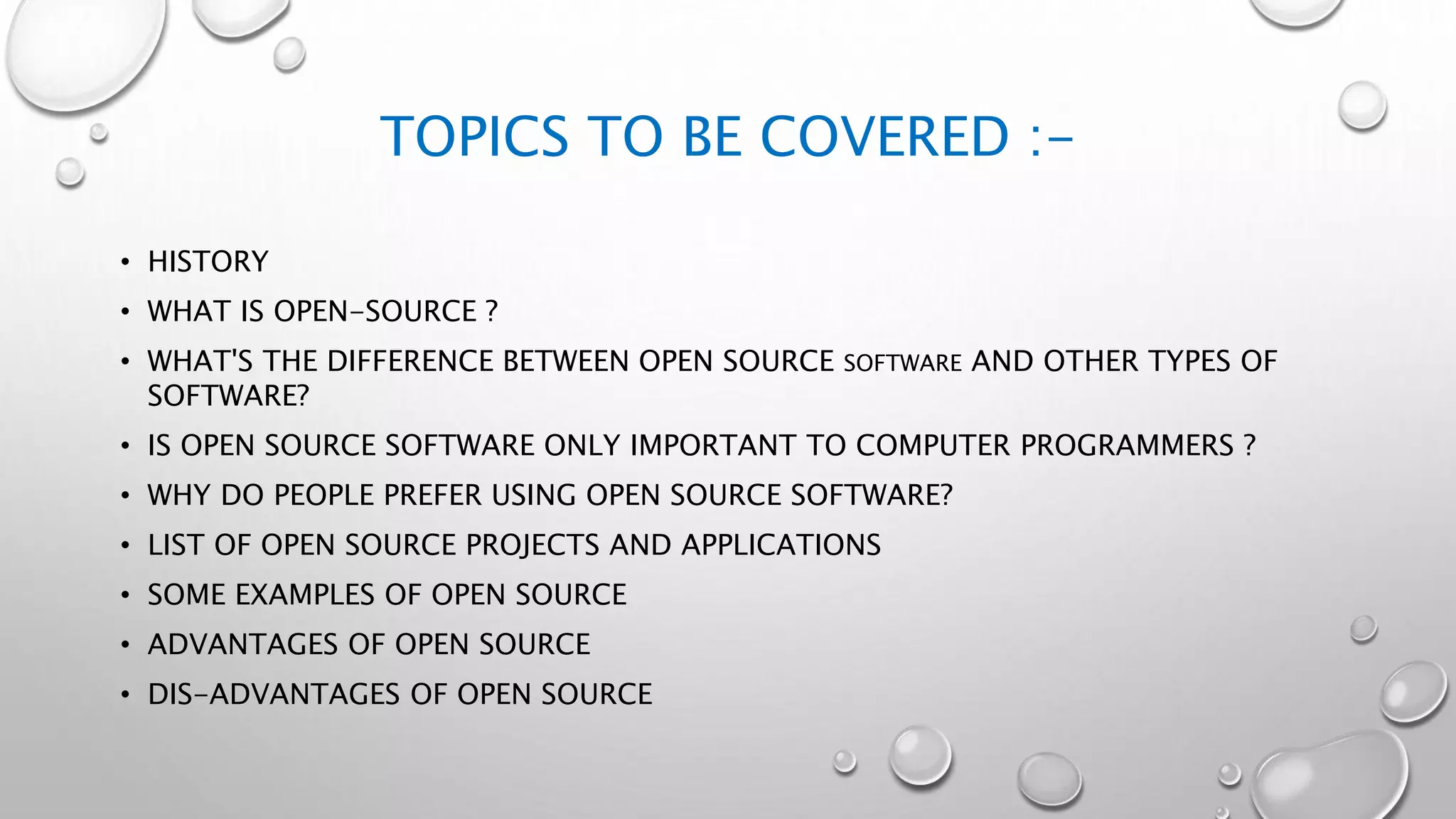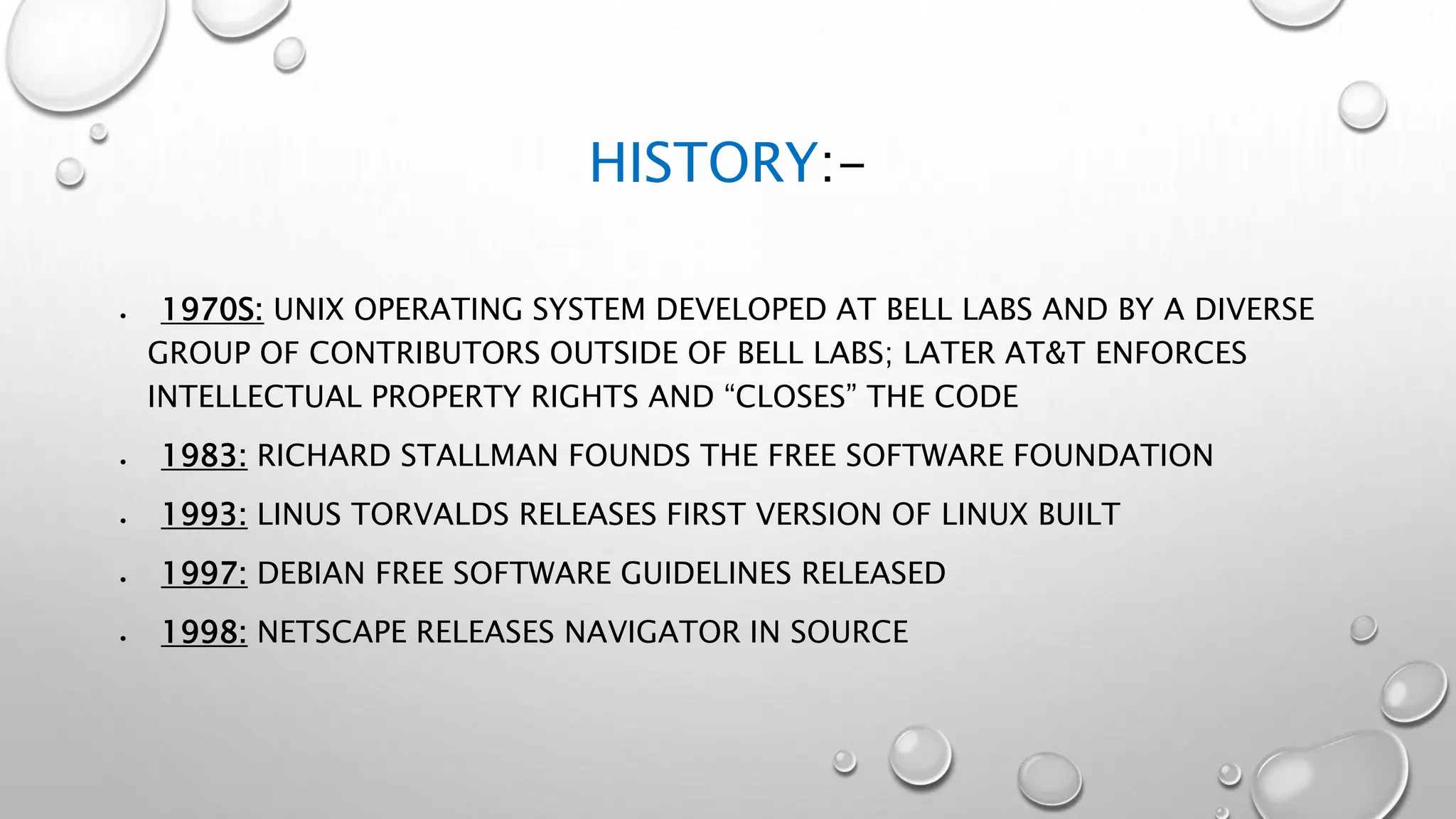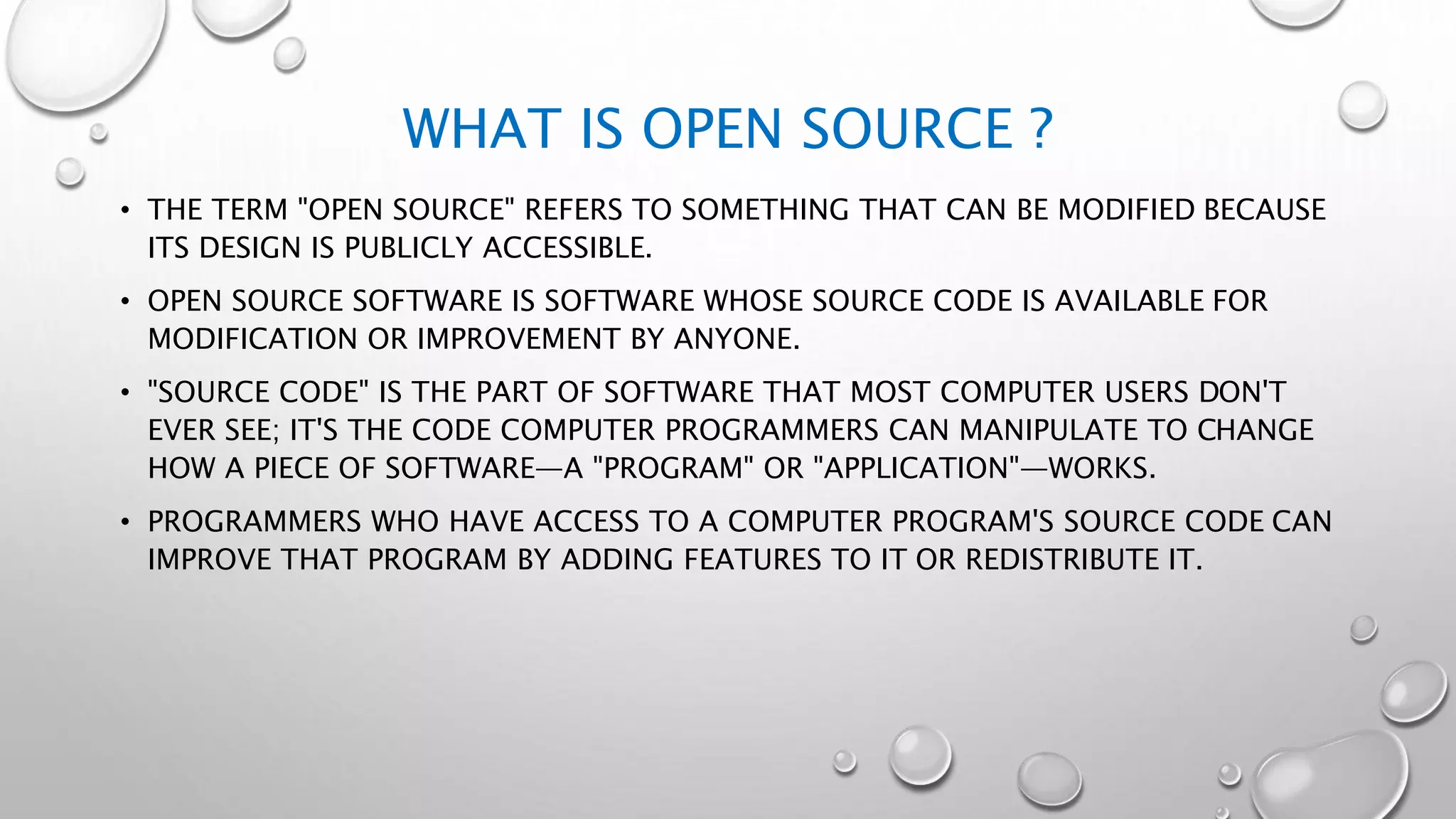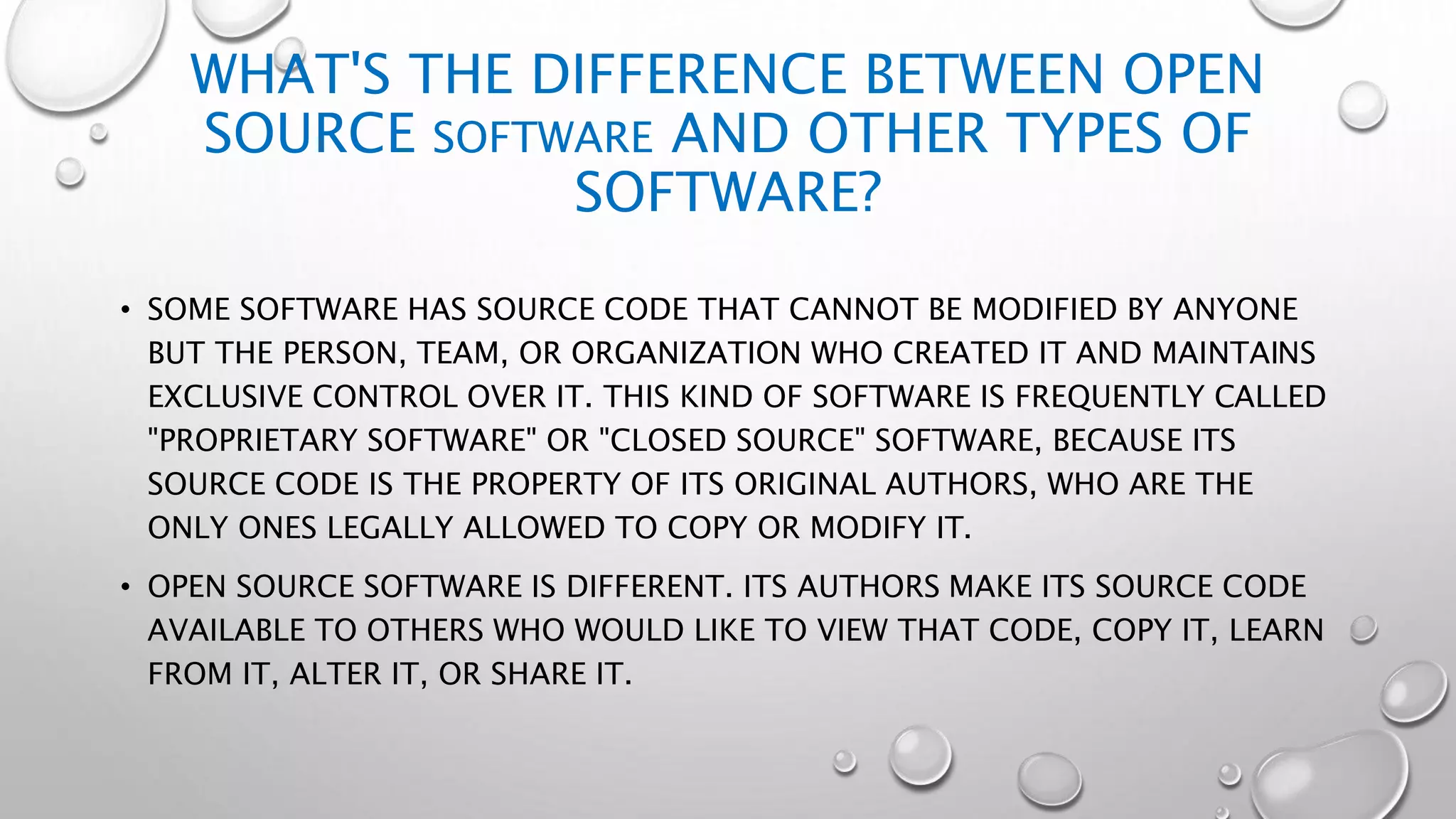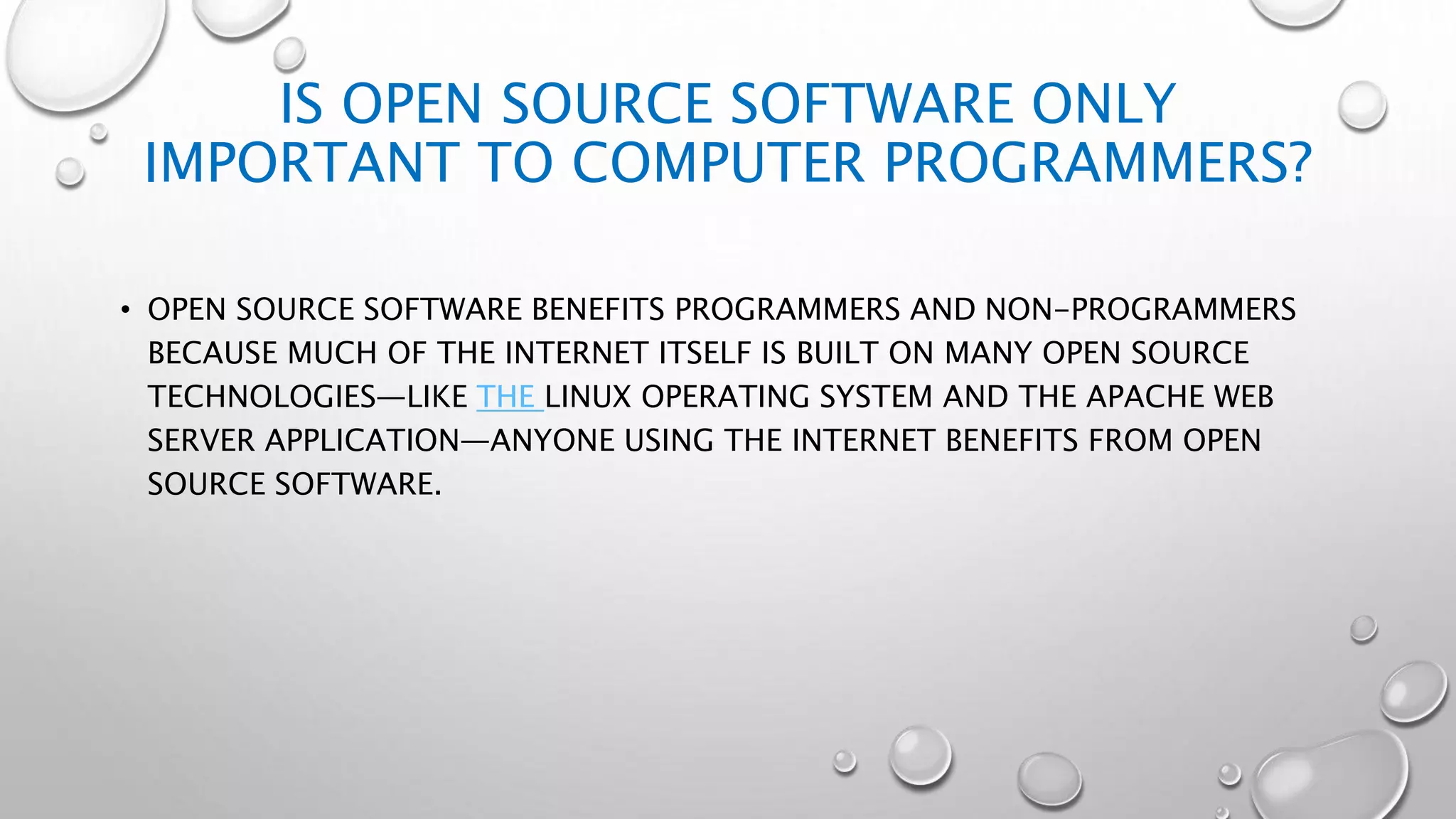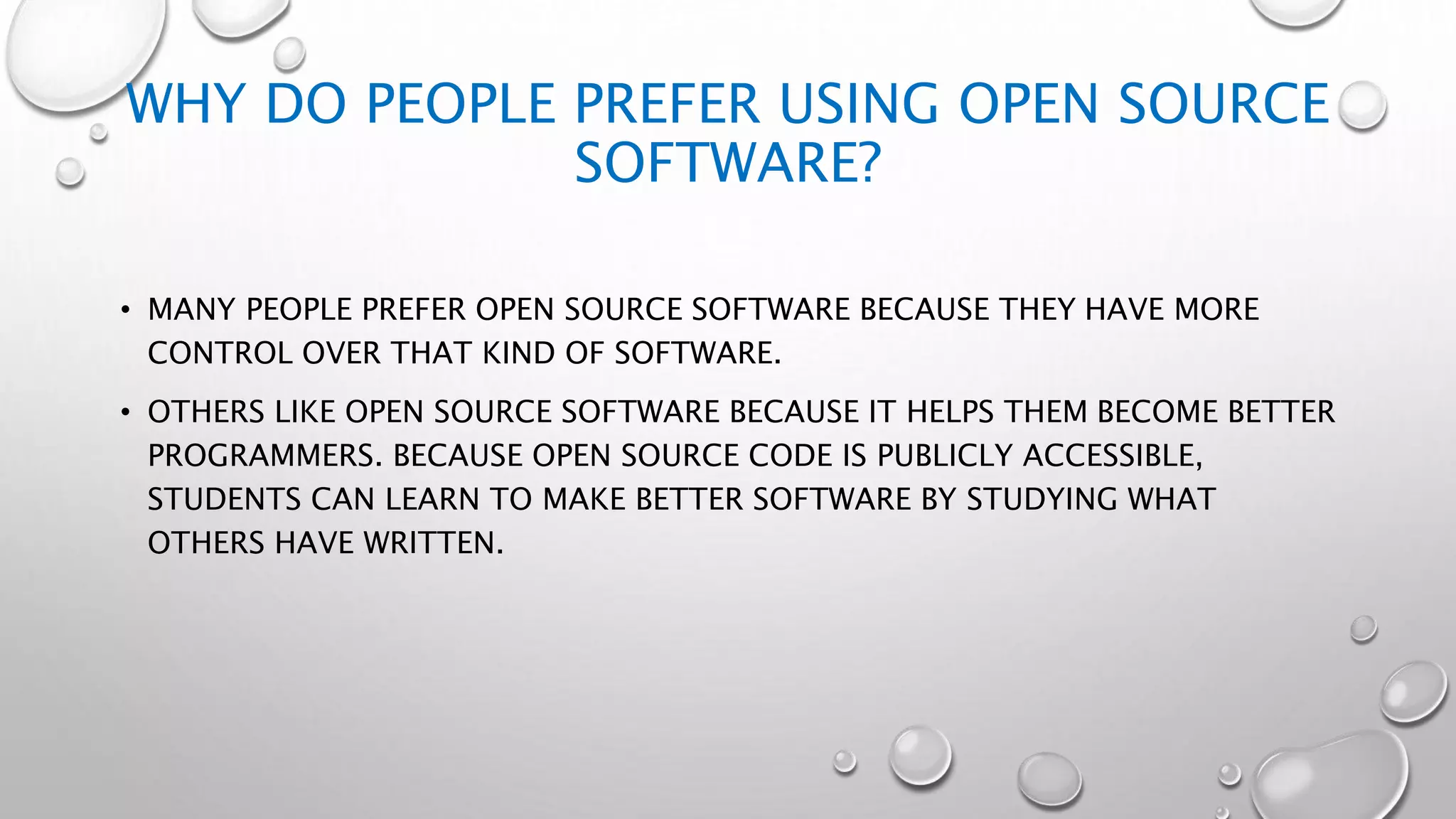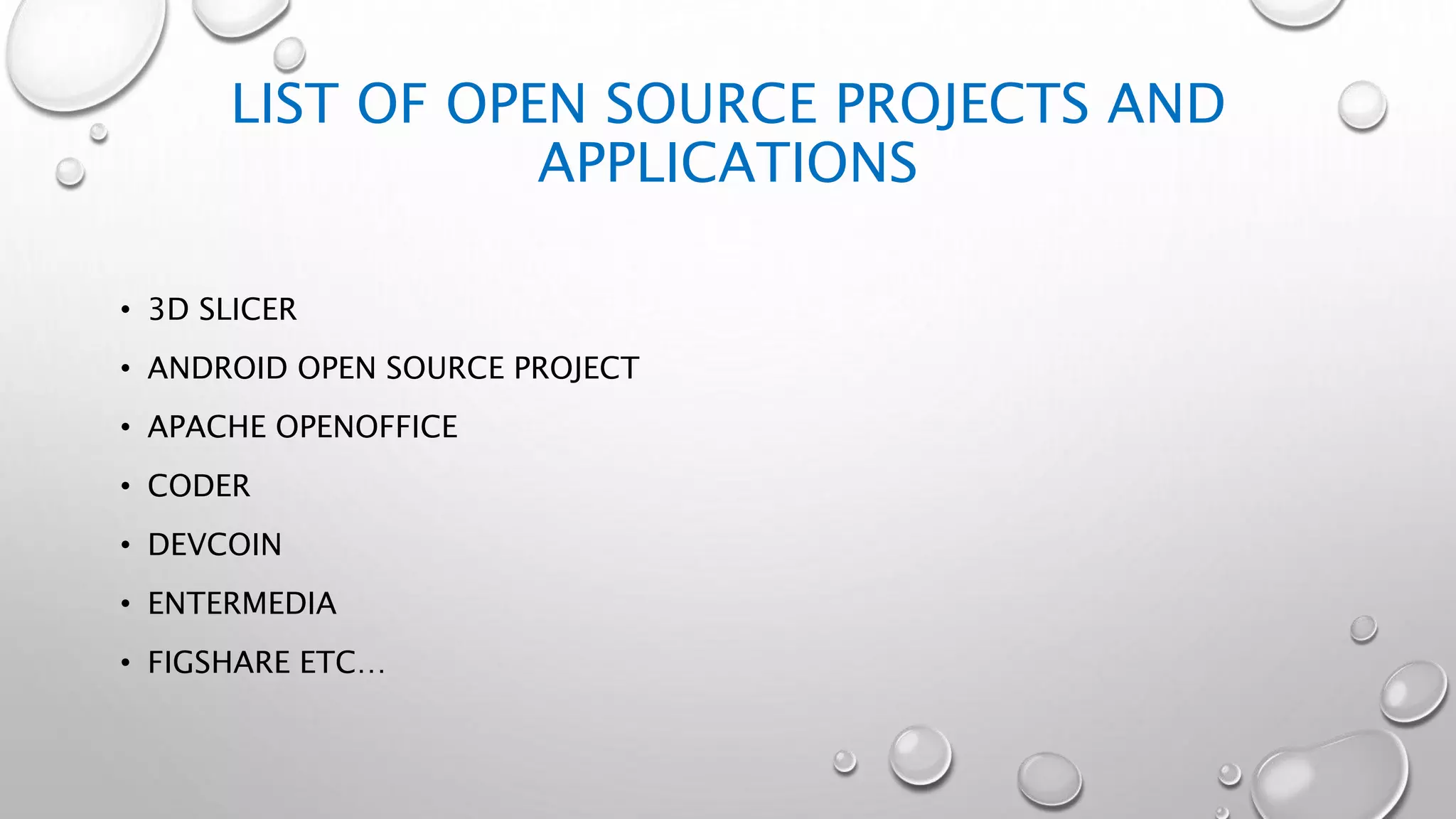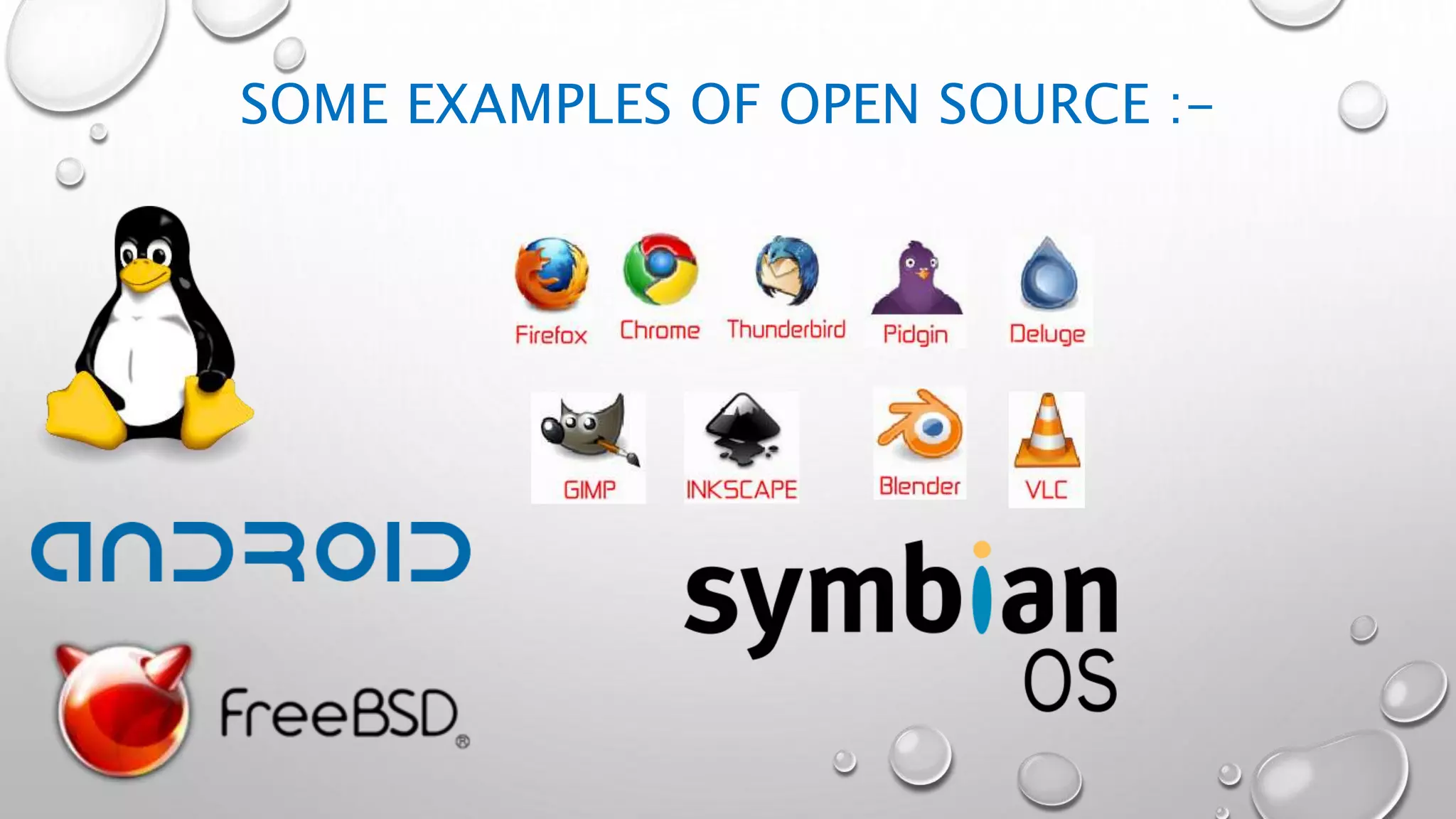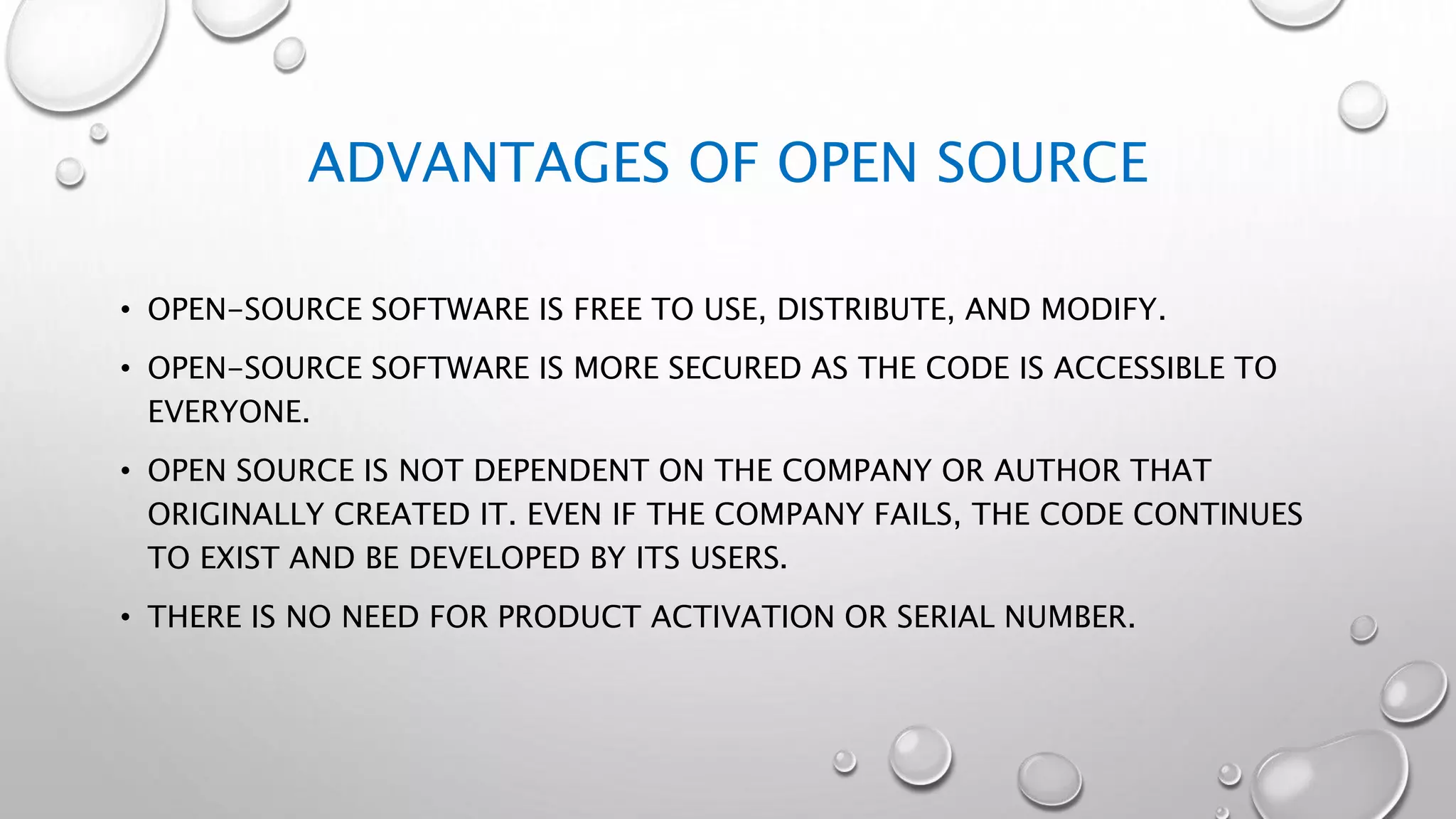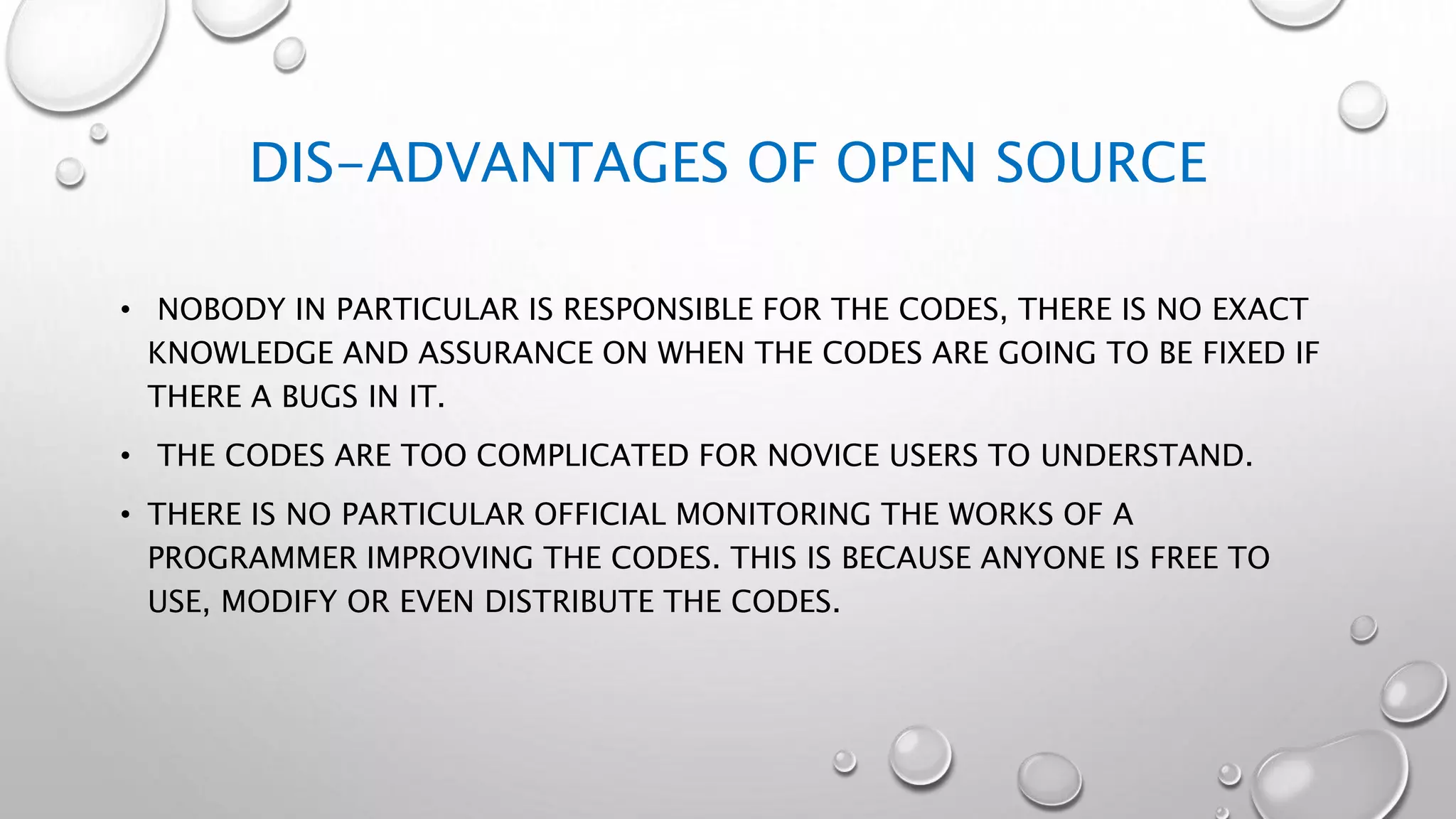This document provides an overview of open-source software including its history, definition, differences from proprietary software, importance, advantages, and disadvantages. It discusses how open-source began with UNIX in the 1970s and key people and organizations that have driven the open-source movement. Open-source software makes its source code publicly accessible so it can be modified or improved by anyone. This benefits both programmers and non-programmers by allowing for greater control, learning opportunities, and more secure software. However, open-source also lacks centralized responsibility and support while having complex code and no official monitoring of changes.

